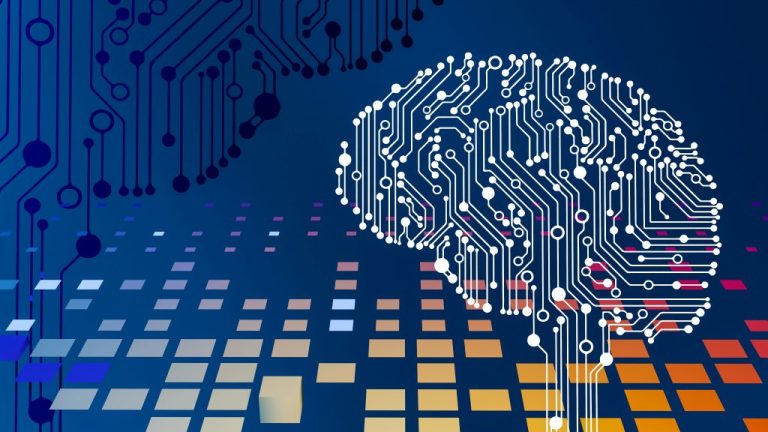Revolutionary AI Imaging Unveils the Moon’s Hidden Craters
Machine Learning Research: AI Imaging Solution for Moon’s Shadowy Craters
Researchers from the Max Planck Institute for Solar System Research (MPS) in Germany have introduced an innovative AI technique aimed at enhancing the imaging of the Moon’s shadowed craters. The algorithm, known as HORUS (Hyper-effective nOise Removal U-net Software), offers a remarkable capability to map these dark areas with unprecedented resolution.
Utilizing over 70,000 calibration images captured by NASA’s Lunar Reconnaissance Orbiter on the Moon’s dark side, HORUS effectively minimizes the noise often associated with low-light imagery. By incorporating data about the camera temperature and the spacecraft’s trajectory, the software further reduces artifacts, allowing researchers to distinguish genuine geological features more clearly. This advanced imaging can achieve a resolution of approximately 1-2 meters per pixel, which is significantly higher—by five to ten times—than previous imaging methods.
To date, the team has successfully mapped seventeen craters located near the Moon’s South Pole. This work is particularly vital given the suspected presence of frozen water in these craters. Dr. Valentin Bickel, a scientist at MPS and the lead author on the study, explained that at the lunar poles, sunlight enters these craters at such a shallow angle that it may not reach their floors, creating areas of “eternal night.” These cold spots are conducive to preserving frozen water for millions of years, a fact validated by NASA’s Lunar Crater Observation and Sensing Satellite (LCROSS) in 2009, which detected significant water deposits in the Cabeus crater.
Among the seventeen craters studied, three fall within the target area for NASA’s upcoming Volatiles Investigating Polar Exploration Rover (VIPER), set to land on the Moon in 2023. The MPS researchers plan to enhance their study of the shadowed regions using HORUS prior to the VIPER mission. Dr. Bickel concluded, “In our recent publication, we aimed to demonstrate the capabilities of our algorithm. Our goal now is to utilize it as extensively as possible.”
For more insights on digital transformation strategies, consider attending Digital Transformation Week North America, taking place from November 9-10, 2021—an event dedicated to exploring advanced strategies for a digitally connected world.
NVIDIA Helps Germany Lead Europe’s AI Manufacturing Race
Machine Learning and Cloud-Native Container Security
The integration of machine learning is crucial for improving the security of cloud-native container environments. With the rise of containerization, ensuring their security is more important than ever, and machine learning provides advanced techniques for monitoring and managing potential vulnerabilities.
Innovative Applications of Machine Learning in Business
Machine learning is revolutionizing various business applications across industries. From finance to logistics, innovative uses of this technology are transforming operations and enhancing efficiency.
AI in Music Streaming: Alleged Fraudulent Activities
There are rising concerns regarding the misuse of AI and bots in music streaming platforms to artificially inflate streaming numbers. These actions raise ethical questions and highlight the darker side of technology in the entertainment industry.
Benefits of Outsourcing Development
Partnering with outsourced developers offers numerous advantages, including cost efficiency, access to specialized skills, and enhanced flexibility in project management. Companies can tap into a global talent pool to accelerate their development processes.
Latest Insights
- Teachers in England receive approval to utilize AI in classrooms.
- Examining AI’s impact on the cryptocurrency landscape.
- Sam Altman of OpenAI shares insights on the advent of superintelligence.
Explore Categories
- Applications
- Companies
- Deep & Reinforcement Learning
- Enterprise
- Ethics & Society
- Industries
- Legislation & Government
- Machine Learning
- Privacy
- Research
- Robotics
- Security
- Surveillance
- Sponsored Content
Understanding the Intersection of Technology and Society
In today’s rapidly evolving landscape, the relationship between technology and various societal elements is increasingly significant. This connection includes various sectors such as industries, legislation, government roles, and areas such as machine learning, privacy, research, robotics, security, and surveillance. The impact of technology on society cannot be understated, as it reshapes how we interact, govern, and conduct business.
Exploring Technological Categories
Exploration of different technological categories is vital for understanding their implications. From AI and IoT to telecommunications and sustainability, each category presents unique challenges and opportunities. Keeping abreast of advancements in these areas is essential for professionals looking to adapt to changing landscapes in their respective fields.
Engagement and Information Sharing
Staying informed about the latest developments in technology is crucial for industry professionals. Subscribing to relevant publications ensures access to premium content and timely updates on innovations and trends that could affect various sectors. Active engagement in ongoing discussions about these topics can foster collaborative solutions and innovative thinking.
Conclusion
As we move forward, the interplay between technology and society will continue to shape the world we live in. Awareness and adaptability are key for navigating this dynamic environment, where understanding different aspects of technology can lead to more informed decisions and strategies in business and governance.







